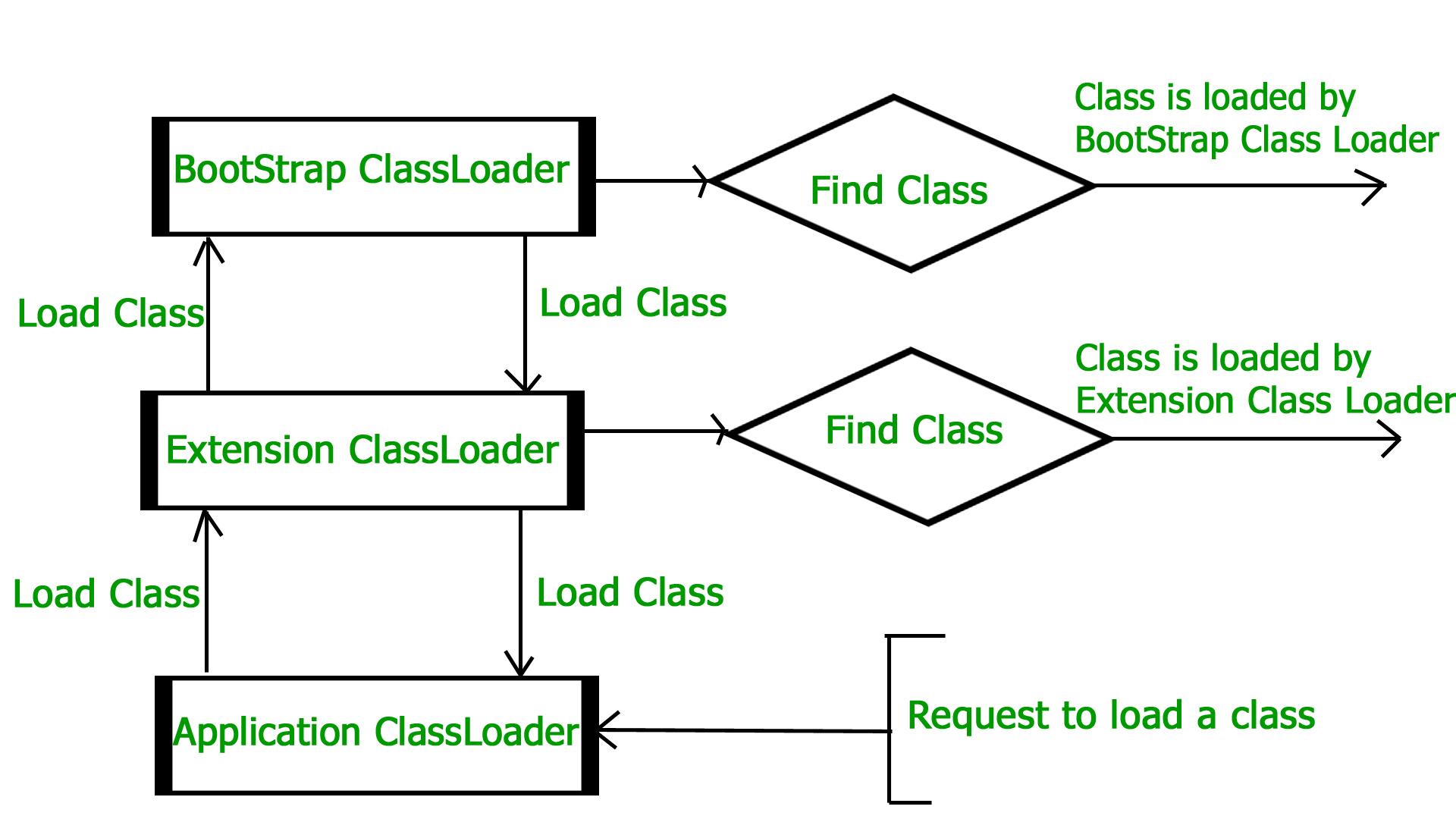PermGen and Metaspace
PermGen is an abbreviation for Permanent Generation and
it’s a special heap space which is separate from the main Java heap where JVM
keeps track of metadata of the classes which have been loaded.
In Java 8, PermGen
has been renamed to Metaspace - with some subtle differences. From our
perspective, it is important to note that Metaspace has an unlimited default
maximum size.
On the contrary, PermGen from Java 7 and earlier has a
default maximum size of 64 MB on 32-bit JVM and 82 MB on the 64-bit version. Of
course, these are not the same as the initial sizes.
Java 7 and earlier
starts with something around 12-21 MB of the initial PermGen space.
|
JVM
|
Default
maximum PermGen size (MB)
|
Default
maximum Metaspace size
|
|
32-bit
client JVM
|
64
|
unlimited
|
|
32-bit
server JVM
|
64
|
unlimited
|
|
64-bit JVM
|
82
|
unlimited
|
It is worthwhile to mention that prior to Java 7,
interned Strings used to be kept on the PermGen. That caused some serious
problems with the infamous:
java.lang.OutOfMemoryError: PermGen space
Whenever there is a need to resize PermGen/Metaspace, JVM
will do it as it does with the standard heap. Resizing those spaces requires a
full GC, which is always an expensive operation. It can usually be observed
during a startup when a lot of classes are being loaded. Especially if the
application has dependencies on many external libraries. If there are a lot of
full GCs during the startup, it’s usually because of that. If that case,
increasing the initial size can boost the startup performance.
To increase PermGen, we have the following commands:
-XX:PermSize=N - sets the initial (and minimum
size) of the Permanent Generation space.
-XX:MaxPermSize=N - sets the maximum size of the
Permanent Generation space.
In Java 8 and onwards, we can set the initial and maximum
size of Metaspace using the following commands:
-XX:MetaspaceSize=N - sets the initial (and minimum
size) of the Metaspace.
-XX:MaxMetaspaceSize=N - sets the maximum
size of the Metaspace.
Examples:
java.lang.OutOfMemoryError: PermGen
space
at java.lang.ClassLoader.defineClass1(Native
Method)
at java.lang.ClassLoader.defineClass(ClassLoader.java:620)
at java.security.SecureClassLoader.defineClass(SecureClassLoader.java:124)
1. Solution
By default, Tomcat is assigned a very little PermGen memory for
the running process. To fix it, increase the PermGen memory settings by using
the following Java VM options.
-XX:PermSize<size>- Set initial PermGen Size.
-XX:MaxPermSize<size>- Set the maximum PermGen Size.
2. Windows
Tomcat is managed by this script file
catalina.bat, dive inside the
script, you will find out that catalina.bat always find and run the setenv.bat file to set the
environment variables.
{$tomcat-folder}\bin\catalina.bat
//...
rem Get standard environment variablesifnot exist"%CATALINA_BASE%\bin\setenv.bat"goto checkSetenvHome
call"%CATALINA_BASE%\bin\setenv.bat"
goto setenvDone:checkSetenvHomeifexist"%CATALINA_HOME%\bin\setenv.bat"call"%CATALINA_HOME%\bin\setenv.bat"
:setenvDone//...
Copy
2.1 To set the environment variable on Windows, create a
setenv.bat manually, and put
it into the ${tomcat-folder}\bin folder.
${tomcat-folder}\bin\setenv.bat
setJAVA_OPTS=-Dfile.encoding=UTF-8 -Xms128m -Xmx1024m -XX:PermSize=64m -XX:MaxPermSize=256m
Copy
P.S No double quotes,
set JAVA_OPTS={value}.
2.2 Restart Tomcat, it will call the
setenv.bat file to set the
environment variable automatically.{$tomcat-folder}\bin\catalina.bat restart
Copy
3. Linux
On Linux, the process is same, just Tomcat is using
catalina.sh and setenv.sh instead.
3.1 Find out where is
catalina.sh :
catalina.sh
$sudofind/ -name"catalina.sh"
Password:find: /dev/fd/3: Not a directoryfind: /dev/fd/4: Not a directory/Users/mkyong/Downloads/apache-tomcat-6.0.35/bin/catalina.shCopy
3.2 Review the
catalina.sh, script, it behaves like Windows, but use setenv.sh instead.//...
# Ensure that any user defined CLASSPATH variables are not used on startup,
# but allow them to be specified in setenv.sh, in rare case when it is needed.
CLASSPATH=
if[-r"$CATALINA_BASE/bin/setenv.sh"];then
."$CATALINA_BASE/bin/setenv.sh"
elif[-r"$CATALINA_HOME/bin/setenv.sh"];then
."$CATALINA_HOME/bin/setenv.sh"
fi
//...
Copy
3.3 Create a
setenv.sh manually, and put it into the ${tomcat-folder}\bin\ folder.
${tomcat-folder}\bin\setenv.sh
exportJAVA_OPTS="-Dfile.encoding=UTF-8 -Xms128m -Xmx1024m -XX:PermSize=64m -XX:MaxPermSize=256m"
Copy
P.S With double quotes,
export JAVA_OPTS=”{value}”.
3.4 Restart Tomcat.





